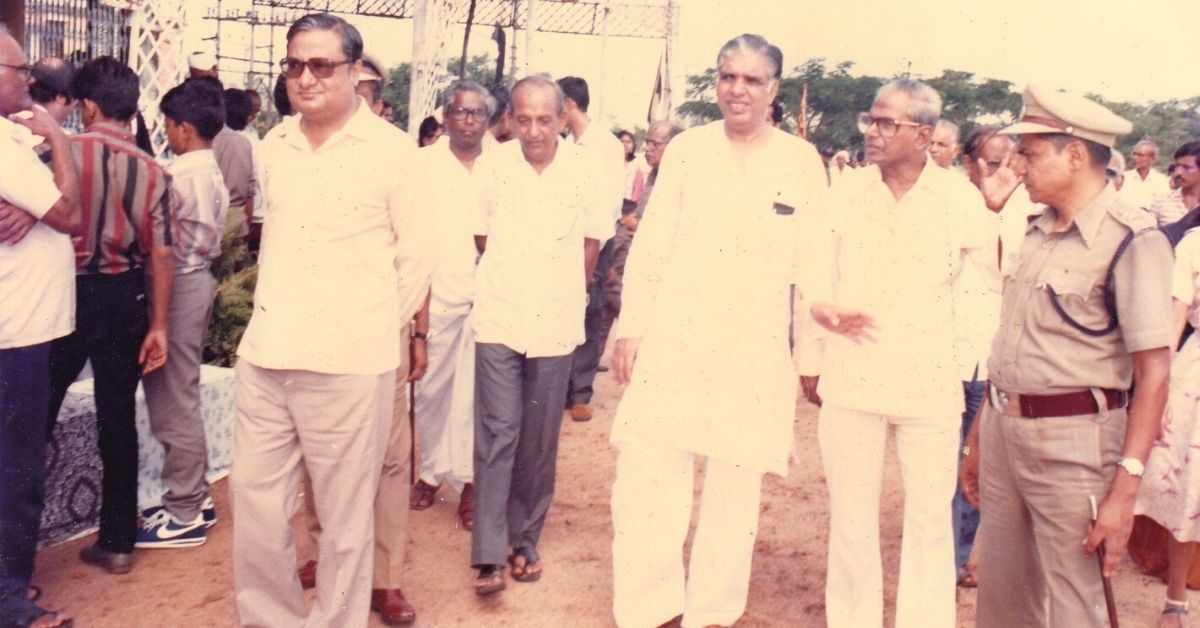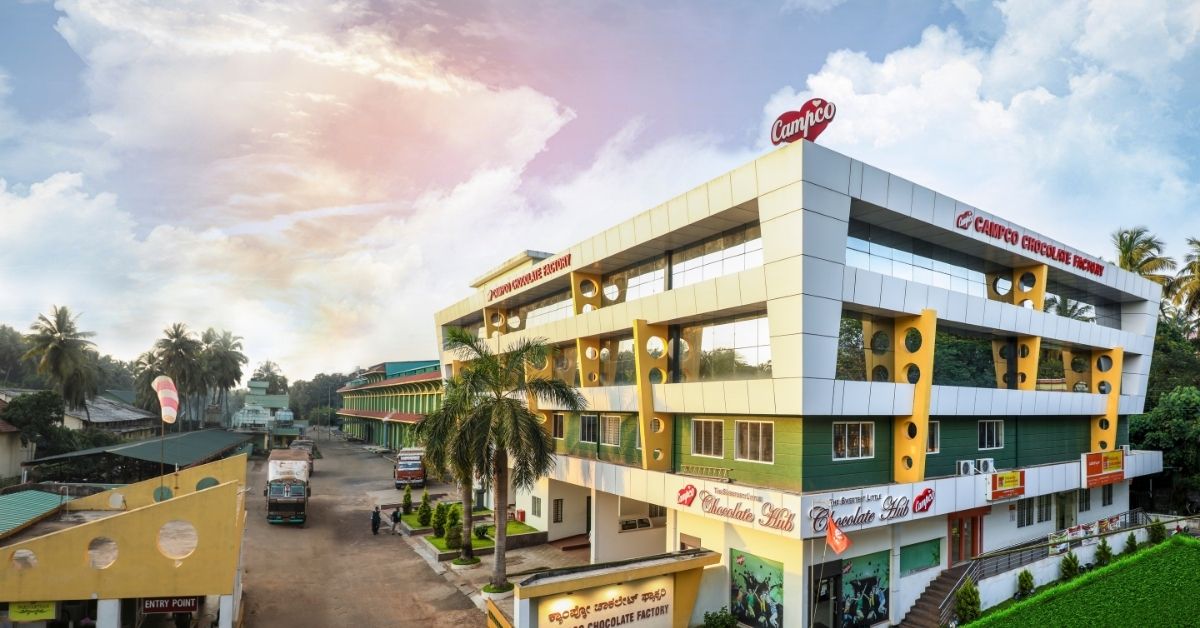Which chocolate is your favourite? Dairy Milk, Perk, or Kit Kat? And which brand do you go to for chocolate ice cream? Baskin Robbins, Amul, or Vadilal? Which is your number one choice for chocolate biscuit? Dark Fantasy, Hide N Seek or Bourbon? Needless to say, picking just one is difficult. If you’ve ever engaged in a heated debate regarding which chocolate product rules superior, the dispute can be brought to peace here.
Because what if we told you that while these products are made by different companies, they share a single origin? At least one ingredient of your favourite, decadent chocolate will have come from the Central Areca Nut Marketing and Processing Cooperative, or Campco. The company’s story is heartwarming, and thanks to a group of Areca nut farmers, our lives are a whole lot sweeter.
Campco is a lesser-known company in the northern region of the country, but the third-largest producer of chocolate in India, followed by Cadbury and Nestle. It won’t be an exaggeration to say that almost all chocolate-infused products, including ice-creams, biscuits and drinks, that we consume have a bit of Campco in them. The company is based in Koornadka, around 52 km from Mangaluru, and was started in 1973 by a group of Areca nut farmers.
A safety net for farmers

The farmers behind Campco were united in their goal to create a safety net wherein they would not be exploited as per the whims and fancies of corporate multinationals, and could secure their own futures by growing cocoa. While the company continues to make money from Areca nuts and clocks a turnover of Rs 1,800 crore per year, the chocolate unit contributes about Rs 300 crore.
H M Krishnakumar, managing and executive director at Campco, says the company was established after farmers growing Areca nuts in Karnataka and Kerala suffered an economic crisis. “The prices of the produce collapsed, and there was a need for price stability in terms of the minimum earnings the farmers should have. The founder of Campco, Varanashi Subraya Bhat, who was also an agriculturist, conceived the idea of the company to solve the crisis,” he tells The Better India. Krishnakumar says Varanashi came up with the idea of not relying on only Areca nut farming, and suggested that farmers grow cocoa and pepper as intercrops.
In the 1970s, Amul and Cadbury became buyers of cocoa to produce chocolates. In 1979, the prices dropped from Rs 13.65 per kilo to Rs 5.30 per kilo. The prices in the international market slumped, and companies stopped buying the product. “To stabilise the market and not remain at the mercy of multinational giants, the company decided to bail out farmers by buying 337 tonnes of produce between 1980 and 1985,” Krishnakumar says, adding that Campco provided a minimum support price to prevent the farmers from suffering losses. With the increase in the production of quality beans, as well as fewer buyers, the company decided to produce chocolate products.
Krishnakumar says the farmers grew high-quality cocoa, but training and refining their skills became mandatory to create products that could compete with global chocolate companies. “Farmers had no knowledge about chocolate making, but everyone decided to enter the sector,” he adds.
The chocolate unit was established in 1986 to produce premium quality chocolates, and their derivatives were at par with Brazil, Ghana and other cocoa cultivating nations. It became arguably the largest factory in Southeast Asia. Krishnakumar says the company also exported dry cocoa beans to earn money.
He recalls that initial years of struggle did not allow the company to make immediate profits. “The times were difficult, as farmers received higher rates for their produce, despite fluctuations in the international market. The aim was to cushion them from harsh market conditions. By bearing losses, the company helped them benefit with stable income,” he adds.
Beyond supporting farmers by offering better rates for cocoa, the company has helped them grow quality crops using modern techniques and provided medicinal and financial aid.
A piece of Campco in every chocolate
In 1994, Campco began supplying raw material to companies by selling cocoa butter, choco mass and chocolate compounds that went into the making of chocolate, cookies, ice-creams and beverages. “Name any chocolate product in India, it will have at least one ingredient that comes from Campco,” Krishnakumar says.
He adds that companies such as Amul, Britannia, ITC, Unibic, Parle, Cadbury, Hershey’s, and Lotte, among others, source chocolate from Campco, to use them in a variety of products ranging from chocolate chips to milk powders such Bournvita and Horlicks. The factory churns out at least 50 cocoa products every year. It also has its own signature chocolates including the Campco Bar, Melto, Cream, and Turbo, which are established products in Karnataka.
To survive the negative tides of fluctuating prices, in the 1990s, the company signed a 10-year agreement with Nestle. The multinational giant had been eyeing the Indian market, and leased facilities at Campco. The collaboration also made it mandatory for Nestle to lift cocoa beans from Campco. The agreement helped the farmer-cooperative attain security, because otherwise, Nestle could have imported cocoa beans for its production.
Mainly working under the shadow of Areca nut production, the chocolate unit started earning profits in 2005, and its share has been growing ever since.
However, a crisis arrived between 2012 and 2015, when cocoa prices dropped to Rs 35 a kilo against Rs 40-50 a kilo. “The company suffered losses, but still paid farmers Rs 50-55 per kilo. This way, the farmers are protected,” Krishnakumar adds.
‘Farmers are the priority’
Krishnakumar says that over the years, the demand for chocolate and its products has increased ten folds. “It increases by 15-20% each year. Increasing production also adds to the costs. Chocolate-making is expensive and constant attempts go into reducing the costs. Wind and solar energy contribute to meet 65% of all energy needs of the company. We aim to convert 45% of energy use to solar separately,” he adds.
He says the factory also requires about 3,00,000 litres of water daily. “We have a rainwater harvesting system and two ponds on the 13-acre campus. Every drop of water is percolated and recharged in the ground. Around 30 crore litres of water have been stored, which helps meet water requirements for almost 100 days,” Krishnakumar adds. The company has also installed bio-boilers that use biofuels and cut the use of fossil fuel, saving expenses worth Rs 1.2 crores.
The business focuses on investing in marketing and improving the quality of products. It is also investing in research to move the production from compounds to pure chocolate. At present, Campco produces 7,000 metric tonnes of chocolates annually. The company has over 1.16 lakh individual growers and over 570 farmers cooperatives working together.
“We will continue to protect the interests of farmers because that is the principle on which the company was founded. More than profit-making, it is the farmers that remain the priority of the cooperative company,” Krishnakumar says.
Farmers form the very foundation of India, and Campco’s success story, which spans across generations, is a stellar example of just that.
Edited by Divya Sethu
If you found our stories insightful, informative, or even just enjoyable, we invite you to consider making a voluntary payment to support the work we do at The Better India. Your contribution helps us continue producing quality content that educates, inspires, and drives positive change.
Choose one of the payment options below for your contribution-
By paying for the stories you value, you directly contribute to sustaining our efforts focused on making a difference in the world. Together, let's ensure that impactful stories continue to be told and shared, enriching lives and communities alike.
Thank you for your support. Here are some frequently asked questions you might find helpful to know why you are contributing?

